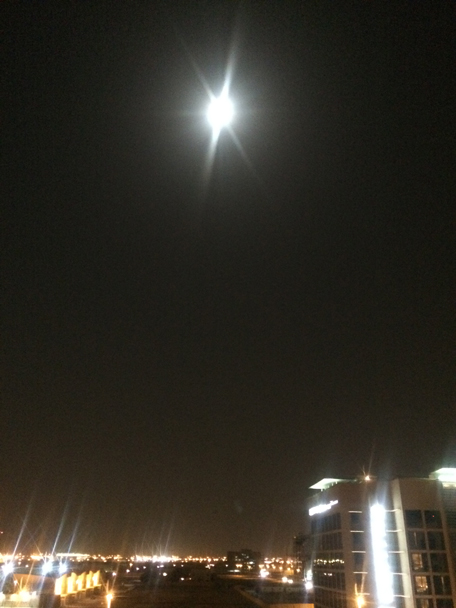The Perseid Meteor Shower - when Earth passes through the debris zone left by Comet Swift–Tuttle is expected to peak between August 10 and August 13, offering a view of 100 shooting stars per hour, conditions permitting.
In a normal year, observers count more than 100 Perseids per hour.
According to the Sharjah Planetarium, the Perseids Meteor Shower has reached its peak and will be visible in the UAE until August 14 from the rise of the full moon at sunset until sunrise.
However, the aftermath of Monday’s Supermoon and the moonlight could effect observation by the naked eye, as could the possibility of convective cloud over the next two days in the western parts, according to the National Centre of Meteorology and Seismology.
To keep you in the mood for the celestial show tonight and tomorrow as well, Google has created an interactive doodle to celebrate the Perseid Meteor Shower. This year, the activity is due to peak on Tuesday.
The much-awaited ‘Supermoon’ dawned over the UAE last night, but left star-gazers underwhelmed in terms of it appearing “huge”.
The Supermoon was, however, a dazzling bright white that was stunning more for its intensity than its size. “It just seemed like it was shining much, much brighter,” says Ankita Pal, a Dubai resident and Emirates 24|7 reader.

A supermoon rises behind the light on top of the Luxor Hotel and Casino on August 10, 2014 in Las Vegas, Nevada. In the second supermoon or perigee moon as it is also known of the summer, the moon appears 30 percent brighter and 14 percent bigger than normal. (AFP)
“It was not as large and ‘red’ as expected,” says Anjali John, another star-gazer who had her eyes on the sky for most of the evening after sunset. “There was this super-shiny milky brightness,” she says.
 Emirates 24|7 staffer Ajanta Paul captures the Supermoon last night.
Emirates 24|7 staffer Ajanta Paul captures the Supermoon last night.
In comparison to other full moons, supermoons can be up to 14 per cent closer and 30 per cent brighter, according to Nasa.
The August 2014 supermoon will become full during the same hour that the moon comes closest to the Earth (lunar perigee), meaning it will outshine other full moons that have fallen on the same day as the lunar perigee.
Video courtesy: Ajanta Paul
Bill Cooke of NASA's Meteoroid Environment Office says: "Lunar glare wipes out the black-velvety backdrop required to see faint meteors, and sharply reduces counts."
However, Cooke adds: "The Perseids are rich in fireballs as bright as Jupiter or Venus. These will be visible in spite of the glare."
"We see more fireballs from Swift-Tuttle than any other parent comet," he says.
Either way, all the action tonight is up in the sky for sure.
Enjoy the show.